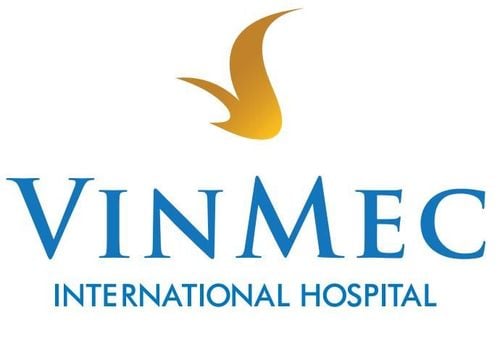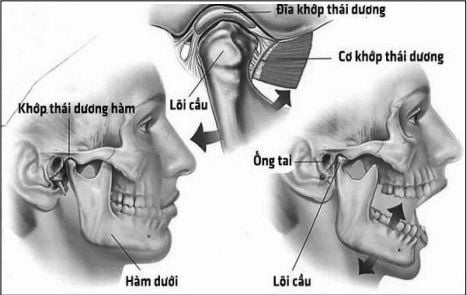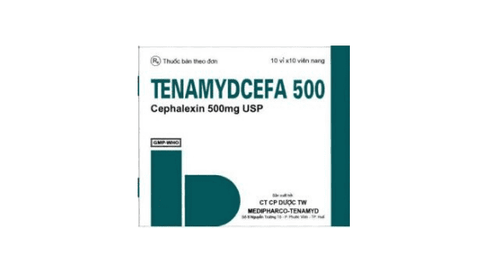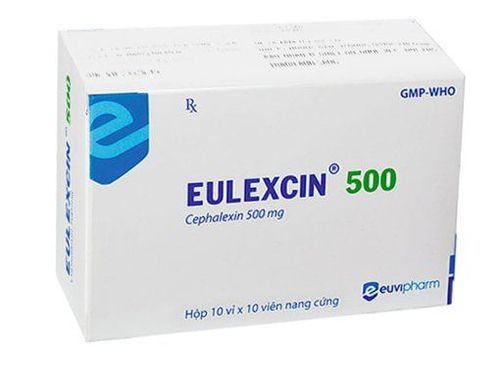This is an automatically translated article.
This article is professionally consulted by Master, Doctor Le Duong Tien - General Internal Medicine Doctor - Department of Medical Examination & Internal Medicine - Vinmec Danang International General Hospital.Headaches behind the ears are a fairly common ailment today. Headaches can be triggered by a variety of reasons, such as occipital neuralgia, mastoiditis, temporomandibular joint disorders, or other dental problems.
1. What causes a headache behind the ear?
1.1. Occipital neuralgia Occipital neuralgia is one of the most common causes of headaches. The occipital nerve originates from cervical vertebrae 2 (C2) and (C3), ascends and innervates the scalp of the nape of the neck. Occipital neuralgia occurs when the occipital nerve, or the nerve that runs from the top of the spinal cord through the scalp, is damaged or inflamed. Because of similar symptoms, occipital neuralgia is often confused with migraine. Most patients have pain on one side of the head, but it can also affect both sides of the head.Some patients also feel pain behind the ipsilateral eye. Symptoms of occipital neuralgia include persistent pain, which usually begins at the base of the skull and may radiate to the back or along the side of the head, burning, throbbing (pulsating pain)
Neuropathic pain Occipital meridians can be primary or secondary. The disease may occur secondary to an underlying disease such as: osteoarthritis of the high cervical spine, trauma to the great occipital, minor, occipital major, minor, or cervical roots. C2, C3 are compressed due to degenerative changes of the cervical spine, cervical disc disease,...
1.2 Mastoiditis The mastoid bone is located behind the ear. Mastoiditis is a lesion that spreads to the mastoid bone around the striatum - the middle ear. Mastoiditis occurs more commonly in children than in adults. Mastoiditis causes swelling, redness, drainage from the ear, ear pain, especially when lying down at night, the pain can spread to the half of the head and to the temples, top region, down to the jaw. Especially when pressing on the mastoid area, mastoid process and posterior border of mastoid bone, the patient will feel intense pain. In addition, the disease can cause fever, fatigue and hearing loss.
1.3 Temporomandibular Joint Disorders The temporomandibular joint is a joint on either side of the head in front of the ears, which helps the jaw open and close. If this joint is dislocated, injured or damaged by arthritis, it will be difficult for the patient to open the mouth, difficult to chew food. Pain in the temporomandibular joint can be caused by stress, teeth grinding, arthritis, trauma... Pain caused by temporomandibular joint disorders can be confused with migraine, earache, pain, and glaucoma.
1.4 Other dental problems Dental problems, such as tooth abscesses, can cause headaches behind the ears. Once these problems are resolved, the patient's pain will gradually decrease.

2. Diagnose the cause of a headache behind the ear
To accurately diagnose the cause of a headache behind the ear, the doctor may order some of the following evaluations:Blood tests. Culture of secretions from the ear. If inflammation or an ear infection is found, the patient may be referred to an ear, nose, and throat specialist. If the doctor suspects occipital neuralgia, he or she may prescribe a nerve blocker to confirm the diagnosis of occipital neuralgia. To diagnose temporomandibular joint disorder, imaging tests are necessary. If a patient has a persistent headache with no known cause, some of the following imaging evaluations may be indicated: X-ray, CT scan, magnetic resonance imaging (MRI).
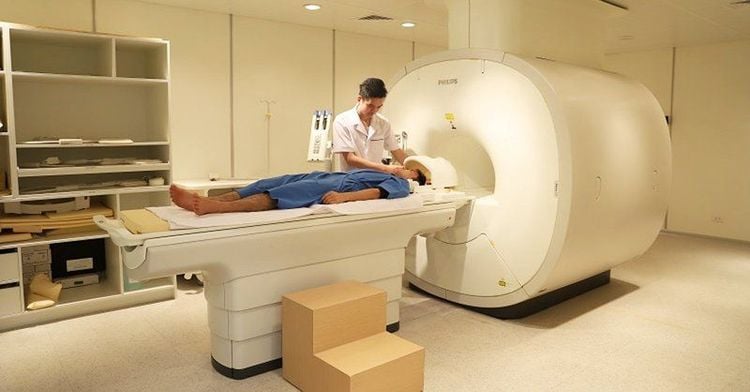
3. Treatment of headache behind the ear
Occipital neuralgiaNon-surgical treatment: Mainly using pain relievers to relieve symptoms for the patient. The patient's body relieves pain by applying heat, resting, or using physical therapy, such as massage. If the pain is more severe, the patient should take pain relievers, anti-inflammatory drugs, muscle relaxants. Anticonvulsants such as Carbamazepine and Gabapentin may also help relieve symptoms. Percutaneous nerve blockade: Percutaneous nerve blockade may be at the occipital nerves or at the C2, C3 ganglia. Your doctor will use steroids to block the nerve. Occipital nerve stimulation: Using a nerve stimulator to deliver electrical impulses to the occipital nerve. In this case, electrical impulses can help block pain signals to the brain. This method is less invasive to the body and surrounding structures will not cause permanent damage. Surgery: Surgery is often indicated in patients with severe, persistent pain and unresponsive to drug therapy. The doctor will discuss with the patient carefully to weigh the benefits and risks of surgery. Microsurgical decompression: is a technique that exposes the affected nerve, identifies the blood vessels that may be compressing the nerve, and gently separates them from the point of compression. Mastoiditis
Mastoiditis is usually treated with antibiotics. If the patient does not respond to antibiotic therapy, the patient may need an eardrum incision. For very severe cases, your doctor may order mastectomy.
Temporomandibular joint disorders
If the patient has pain due to TMJ disorders, some possible treatment methods include:
Pain relievers, anti-inflammatory drugs, or muscle relaxants Splinting or preserving oral hygiene Physiotherapy Removal of joint fluid Corticosteroids Surgery. Vinmec International General Hospital is one of the hospitals that not only ensures professional quality with a team of leading doctors, modern equipment and technology, but also stands out for its examination and consulting services. and comprehensive, professional medical treatment; civilized, polite, safe and sterile medical examination and treatment space.
Master Le Duong Tien has 20 years of experience in internal medicine. Especially, Dr. Tien has many years of experience in musculoskeletal, neurology, endocrinology and cardiology and is currently a General Internal Medicine Doctor of General Internal Medicine Department of Vinmec Danang International General Hospital.
Please dial HOTLINE for more information or register for an appointment HERE. Download MyVinmec app to make appointments faster and to manage your bookings easily.







